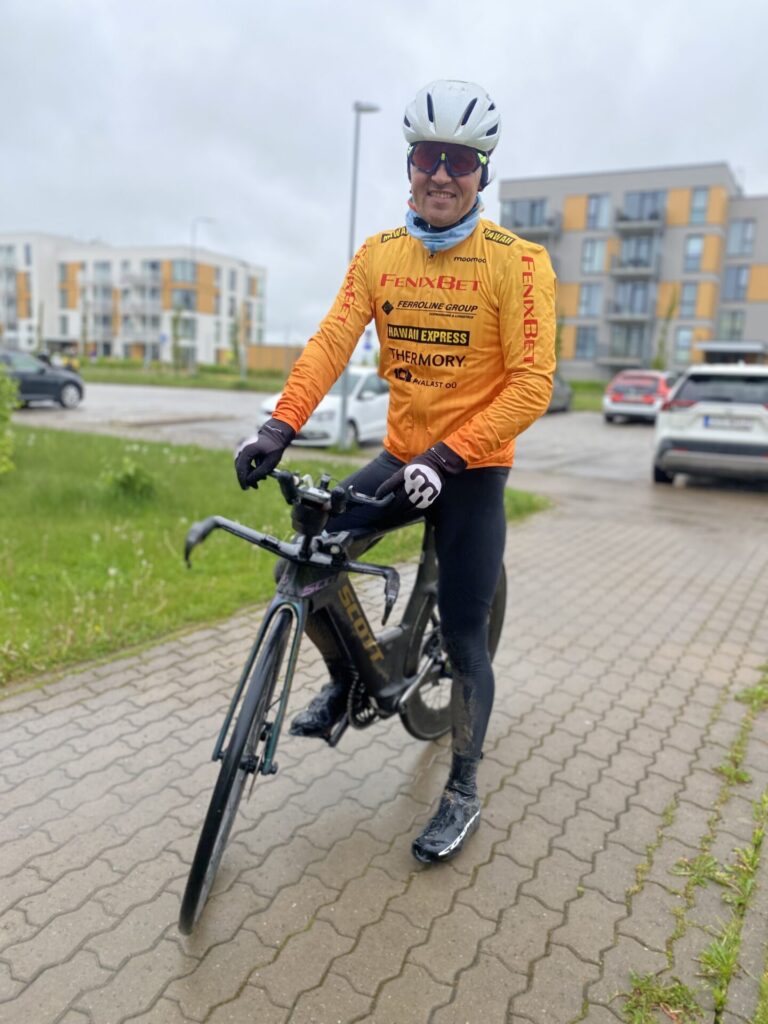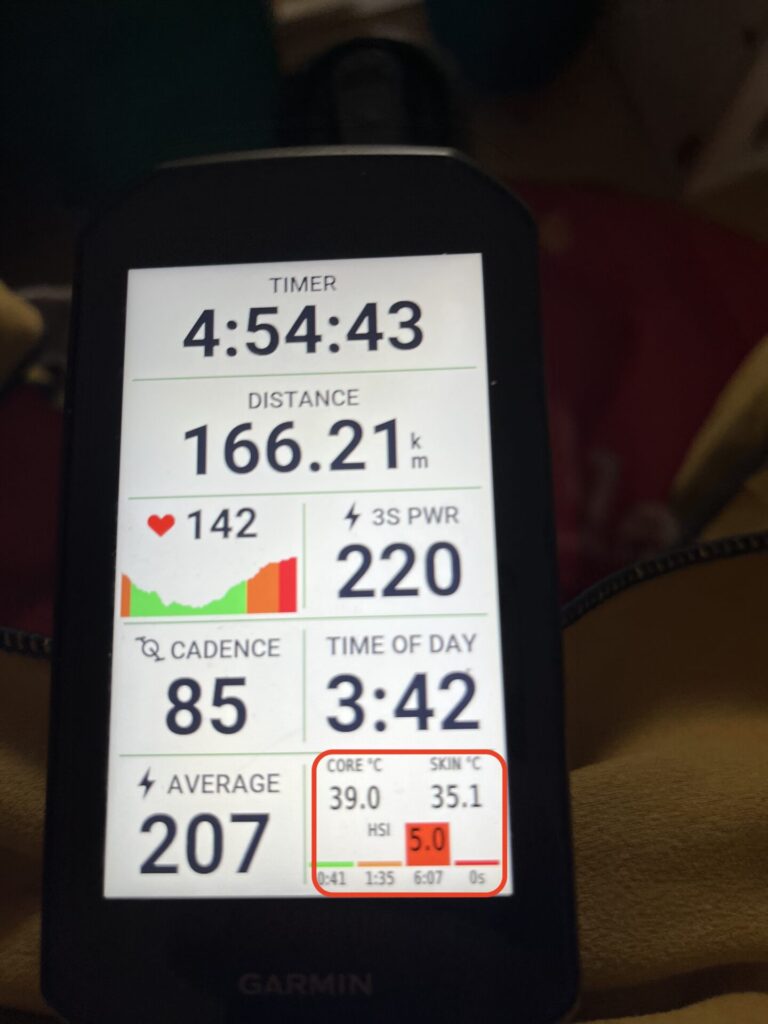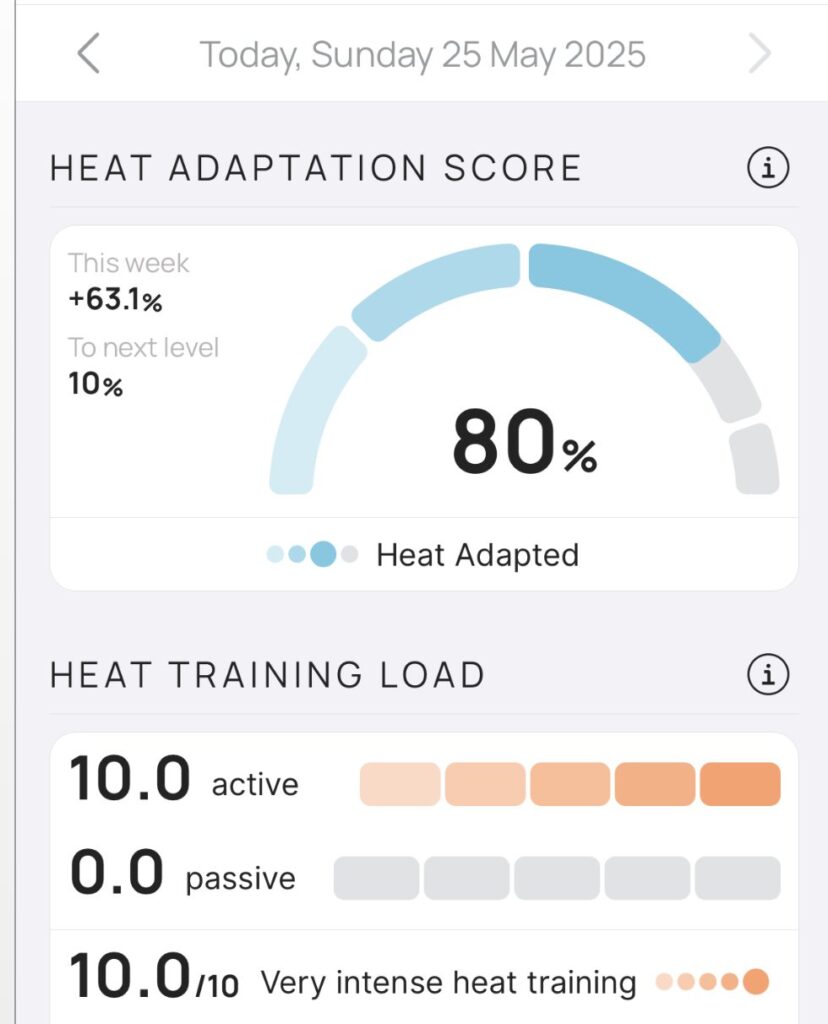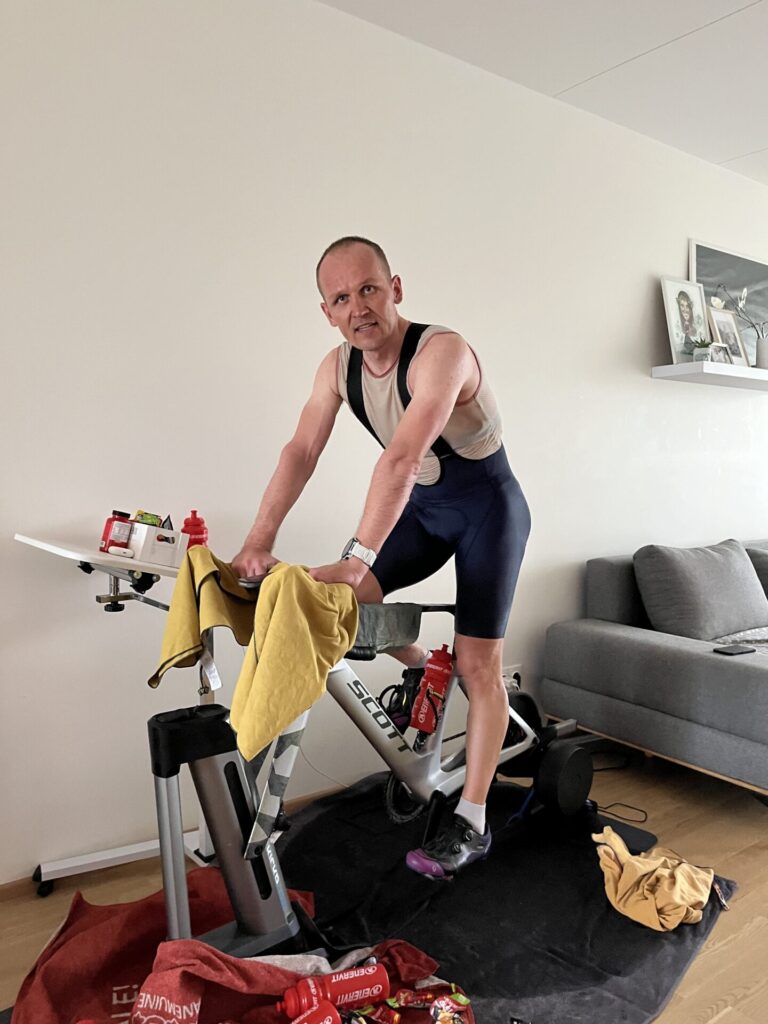Yesterday’s 179 km ride wrapped up my RAAM preparation. From May 1st until yesterday (May 26th), I’ve ridden a total of 3246 km in May — averaging 124.8 km per day. The weather has been typically unpredictable for May: early in the month I battled cold and wind, and later on, I faced chill and rain. For example, I spent the last two hours of yesterday’s ride completely soaked in rain.

The only extreme I wasn’t able to test this month in Estonia — but which will be crucial at RAAM — is the heat. Luckily, heat adaptation can be effectively trained indoors. Because heat adaptation fades quickly if you don’t keep training it, I deliberately left it as the very last stage of my preparation.
🌡️ How am I doing heat training?
Since there’s no sign of heat outside, I have to approach this differently. For that, I’m using a Core body temperature sensor, which measures my internal temperature and sends the data directly to my Garmin Edge cycling computer. The goal of this heat adaptation training is to keep my core temperature within the range of 38.5–39.5 °C (known as “Heat Zone 3”) for at least 45 minutes during the workout. In this zone, the heat starts to impact physiological processes, and the body adapts more effectively.
For example, I recently did a 5-hour indoor ride — an excellent test of both mental endurance and heat adaptation. To keep my body cool, I had to consume a lot of fluid: over those five hours, I drank 7.25 liters of fluid and still lost almost two kilos of body weight. In comparison, yesterday, during a ride of the same duration outside in cool and rainy conditions, I only needed 2 liters of fluid.
I’ve heard that in one year a previous RAAM winner consumed a total of 80 liters of fluid over the course of eight days. That number seems entirely realistic because, during an ultra-triathlon in Fuerteventura in 2018, we tracked all my food and fluid intake, and on the hottest day, I ended up drinking as much as 18 liters of fluid.
I used Core sensor also during my challenge in Death Valley in 2023. Thanks to the sensor, I was able to stay in control in extreme heat and avoid overheating.
The photo here shows the data I see on my screen and how much time I spent in different heat zones over the past week. Currently, my heat adaptation is nearly complete — about 80% — and within the next week, I expect to be fully ready.


☀️ Why is heat adaptation so important?
This doesn’t mean that the 45-degree desert heat won’t affect me. Quite the opposite — it’s definitely going to be a harsh one. But without heat training, it would be far less tolerable. The goal is to give my body a better chance to cope with the heat and to hang on longer when I’m at the edge of overheating.

✈️ Two weeks to the start
As of today, there are exactly two weeks left until the start. Next Thursday, I’ll fly with my team to Oceanside, California. Before the race, we still have to check in, attend the race briefing, and complete all the necessary paperwork (race clearance forms). But all the preparation is done — now it’s just a matter of waiting and keeping my mind sharp!